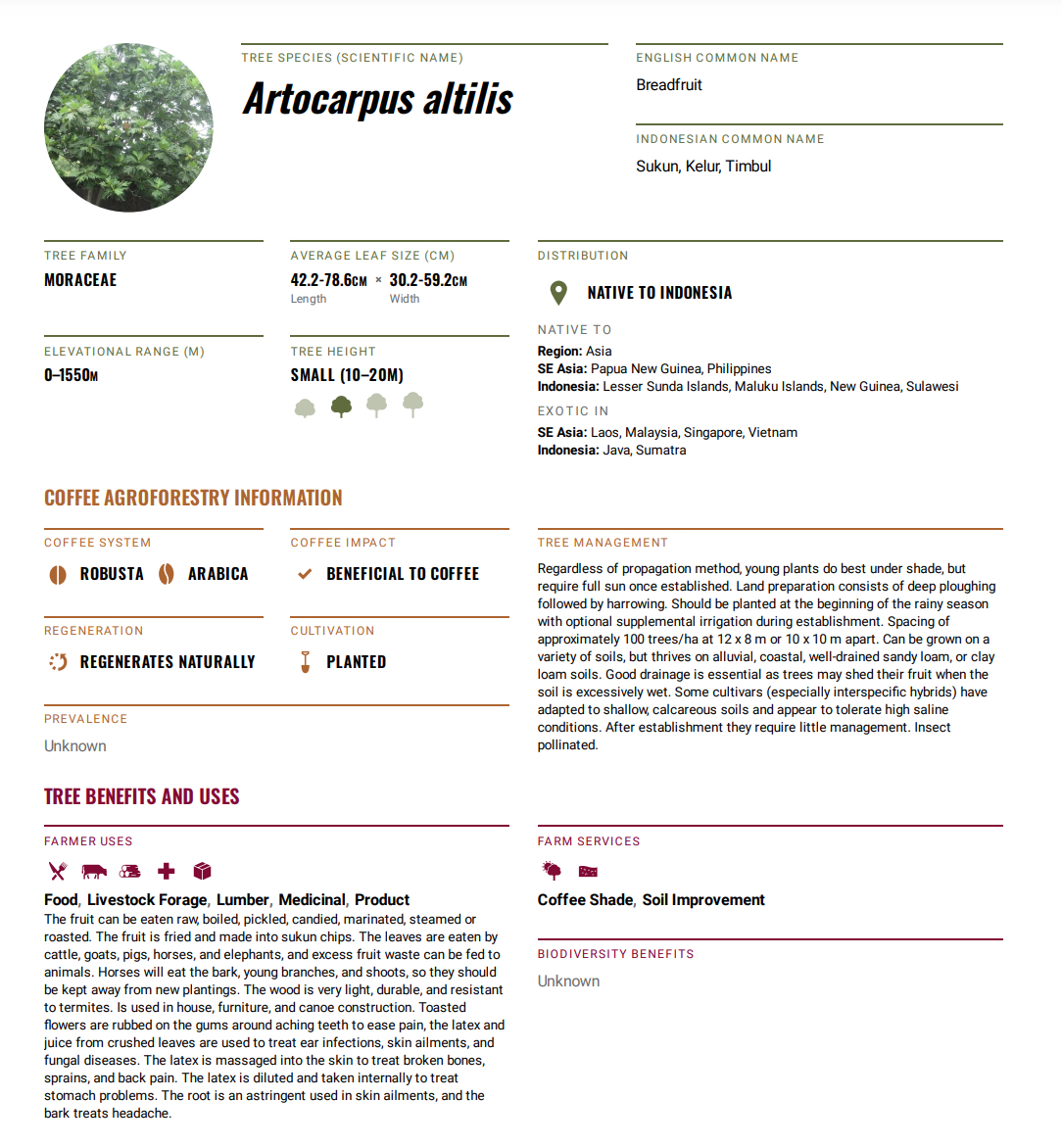
The cover of the new Shade Catalog by Conservation International, Smithsonian Migratory Bird Center and World Coffee Research.
Agroforestry, i.e. the integration of trees and shrubs into cultivated cropland, has been widely touted as beneficial to the environment. It can provide shade to sun-baked crop plants and soils, protect and enhance biodiversity, attract life-giving pollinators, provide additional sources of revenue, improve soil health, and much more.
Yet, as numerous studies on coffee land management have noted, not all shade is created equal.
Helping to differentiate shade sources in coffee cultivation, three sustainability-minded nonprofits have teamed up to launch The Shade Catalog, a living document designed to benefit the natural environments in which coffee is grown, as well as the people who grow it.
The Shade Catalog comes from the Conservation International, the Smithsonian Migratory Bird Center and World Coffee Research.
For the first version of the catalog, the groups turned to Indonesia, which is one of the world’s leading producers of arabica and robusta coffees but also one of the world’s most naturally biodiverse places with some 2 million smallholder coffee farmers working the land.
Related Reading
- Study Finds Hardcore Birdwatcher Coffee Drinkers Largely Unaware of Bird-Friendly Certification
- New Report Says Shade-Grown Must Go Mainstream for Coffee’s Future
- Nine Myths About Coffee Farmer Development: Relationship Coffee in Indonesia
The organizations said the Indonesia Coffee Shade Catalog, which continues to be updated, will be followed by similar catalogs in other prominent producing countries, beginning with Peru in 2022.
From a practical standpoint, the catalog resembles World Coffee Research’s own groundbreaking arabica varieties catalog, which provides vital information on scores of known commercial coffee varieties found throughout the world.
In this case, the catalog is looking at complementary trees and shrubs, providing easily digestible and visually compelling data on characteristics such as scientific family name, leaf size, plant height, elevation range, native habitats and existing non-native habitats. The catalog also makes clear whether the tree or shrub is beneficial to robusta and/or arabica cultivation, while also outlining other farm uses and maintenance requirements.
Available in print or online in both English and Bahasa, the catalog currently includes 125 tree or shrub types, with photos for nearly all of them.
“We hope to encourage farmers and industry decision-makers to implement agroforestry systems that sustain both people and the environment,” Smithsonian Migratory Bird Center Ecologist Ruth Bennett said in an announcement of the release today. “Coffee is a unique crop because it can be grown with trees, to benefit climate, biodiversity and farmers alike. This catalog is a starting point for similar work in coffee-growing regions around the world.”
(Editor’s note: An earlier version of this story incorrectly stated that the shade included “coffee or shrub types.” The guide actually includes “tree or shrub types.”)
Nick Brown
Nick Brown is the editor of Daily Coffee News by Roast Magazine.
Comment
1 Comment
Comments are closed.







Thanks for a great article. We would also be a lot better off if so many roasters would not continually tell their customers that all their coffee is shade grown, they pay above fair trade pricing and the farm practices are beyond organic. The amount of conscious and unconscious greenwashing in our industry is off the charts. We do a disservice to the farmers, the environment and the consumers by perpetration false information, as good as it sounds and as good as it feels to have customers then think you are really great.